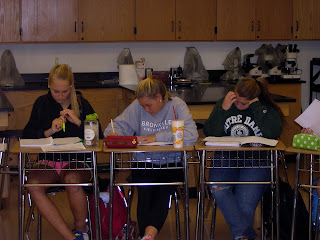C. Adamiyatt's Chemiosmosis and ATP Synthetase Presentation
Adamiyatt Cyrus 11100419 Chemiosmosis and ATP Synthase
B. Bonfiglio's Comparison of Photosynthesis and Respiration
Bonfiglio_Brooke_11100436_Brooke Cellular Respiration vs Photosynthesis
D. Borcich's Cellular Respiration Presentation
Borcich_Declan_11100310_ap Bio Quarter Two Project
E. Choi's Oxidative Phosphorylation and Electron Transport Presentation
Choi Gee-Young 101069 Oxidative Phosphorylation &.Electron Transport
A. Chrappa's Glycolysis Presentaions
Chrappa Argentina 11100324 Glycolysis Project
P. DeJoy's Glycolysis Presentation
DeJoy Peter 11100450 Glycolysis Powerpoint
G. Elbert's Evolution of Metabolic Pathways
Elbert_Gina_11100343_The Evolution of Metabolic Pathways
A. Jones' Comparison of Photosynthesis and Respiration
Jones_Andrew_11100364_Andrew Jones Comparing and Contrasting Photosynthesis and Cell Respiration
M. Laurence's Presentation on Electron Transport and Oxidation Phosphorylation
Laurence Malika 101165 Oxidation
H. Lilly's Krebs Cycle Presentation
H Lilly Krebs Cycle
E. McGough's Presentation Comparing Photosystems
McGough Elizabeth 11100379 Photosystem I vs II
G. O'Toole's Presentation of Krebs' Cycle
OToole Krebs Cycle
S. Past's Presentation on Chloroplasts
Past Samantha 11100388 AP Bio Project 2
A. Petnuch's Presentation on Chloroplasts
Petnuch Alexis 300526 Chloroplasts
N. Petnuch's Presentation of Plant Pigments and Photosystems
Petnuch Nicolette 300527 Pigments and Photosystems
N. Soroori-Motlagh Comparison of Anaerobic and Aerobic Respiration
Soroori-Motlagh Nastaran 200705 Cell Energetics Project Final
N. Weirens Comparison of Anaerobic and Aerobic Respiration
Weirens Naomi 11100536 Anaerobic vs. Aerobic Respiration



























